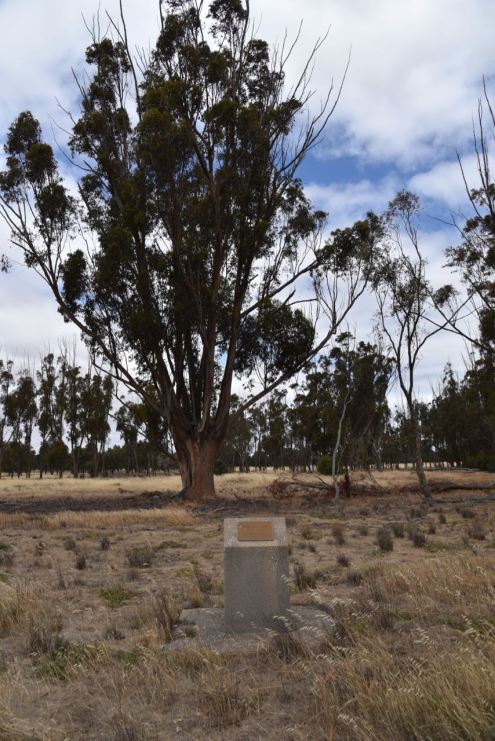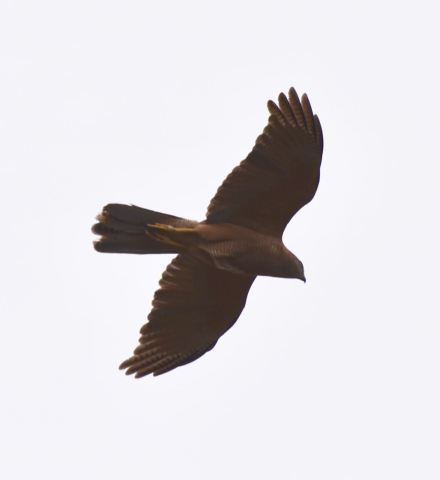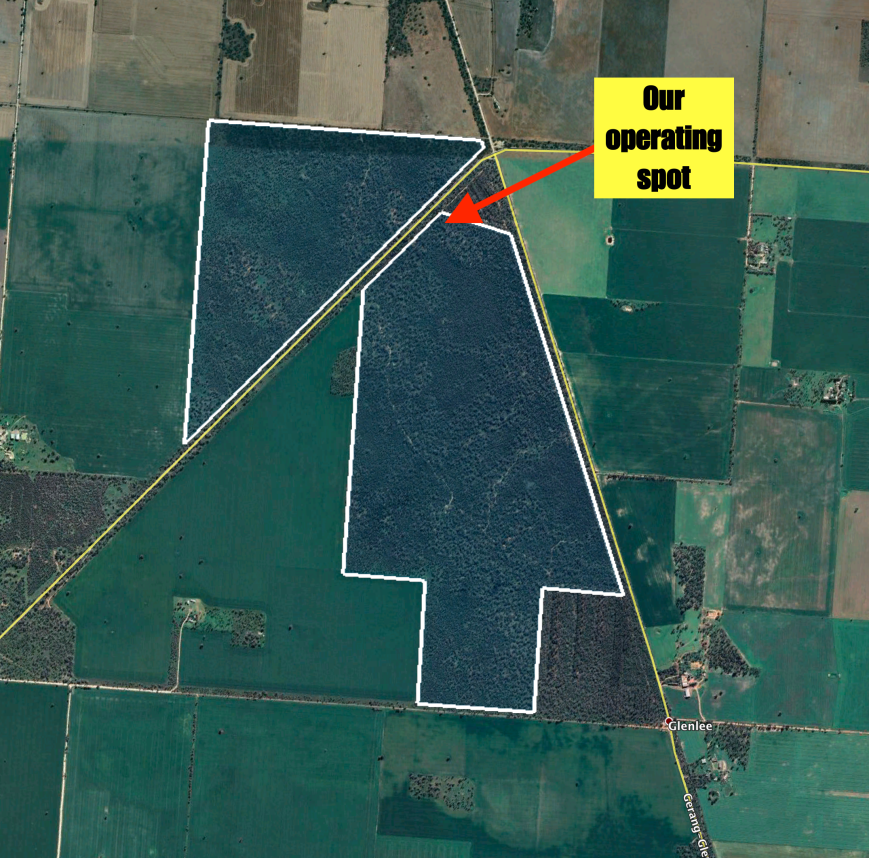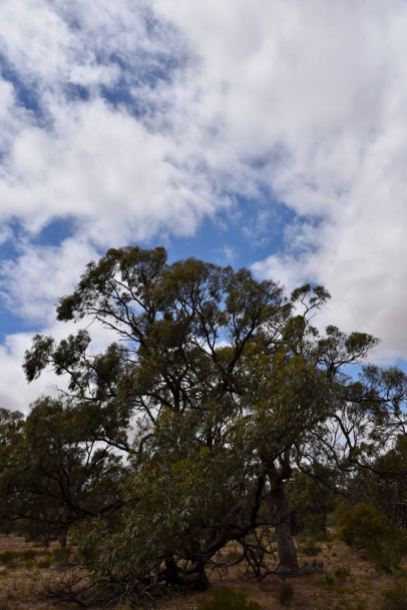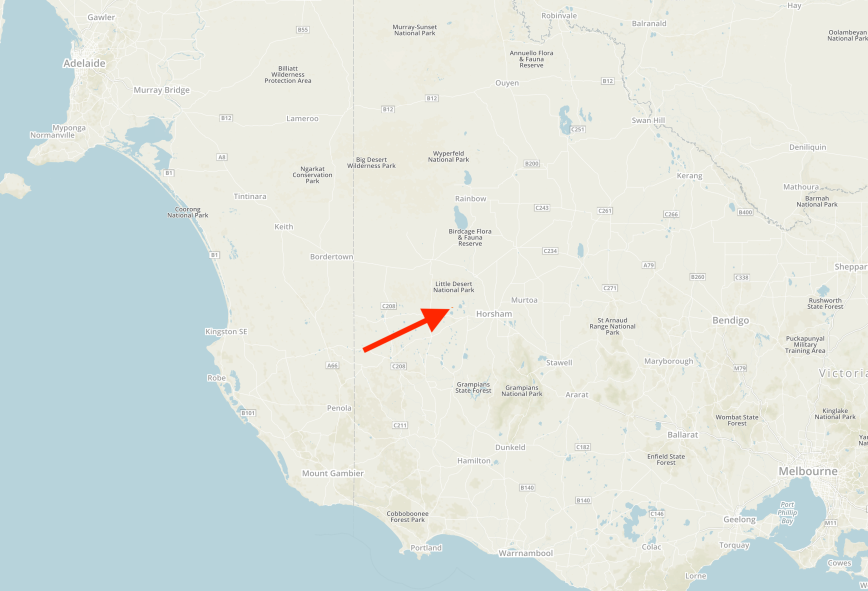It was now Monday (2nd December 2019) and time for us to head home. We had planned to activate about four parks on the way home to the Adelaide Hills, all dependent upon time.
To start the day we again headed to the Dimboola cafe and enjoyed breakfast consisting of bacon & eggs and some nice hot coffee.
Our first park activation of the day was the Gerang Gerung Flora & Fauna Reserve VKFF-2320, which is located about 353 km northwest of Melbourne, and about 17 km west of the town of Dimboola.
This was to be another first-time park activation for the World Wide Flora Fauna (WWFF) program.
Our first stop for the day was Loch lel (Pink Lake) which is located on the Western Highway between Dimboola and Gerang Gerung. The small circular, salt lake received its name from its distinctive pink colour, with the brightness of the hue varying according to the level of rainfall.
We continued west along the Western Highway and soon reached the little town of Gerang Gerung. The name Gerang Gerung is believed to be derived from an Aboriginal word meaning leaf or branch. European settlement of the area commenced as early as 1846. Farms were first taken up in the area in the 1870s. A water storage reserve was established in 1881 and this was followed soon after by the opening of the Junction Hotel. A school was then built and in 1887 when the railway line was established, the town of Gerang Gerung was surveyed.
Pastoral occupation began in 1846 and closer-settlement farms were first taken up in 1874. In 1881 a water-storage reserve was established, and soon afterwards the nearby Junction Hotel was opened. Three years later a school was built and, in 1887 when the railway line was put through, the village of Gerang Gerung was surveyed. This coincided with the opening of a General Store, a Bible Christian church, public hall, blacksmith and a saleyards.
The Australian Handbook of 1903 described Gerang Gerung as follows…..

Today not much remains of Gerang Gerung. The hotel closed in 1958, while the store and post office closed in 1985 and 1988 respectively. The school closed in 1993.
On the corner of the Western Highway and Clark Road we saw a sign for Junction Dam Flora Reserve. It appears that this is the old name of the park and the sign has never been updated.

Gerang Gerung (South) Flora & Fauna Reserve is also shown as a Nature Conservation Reserve on some maps. It is located on the southern side of the Western Highway, while the Gerang Gerung (North) Flora & Fauna Reserve is located on the northern side of the highway.
The park is about 138 acres in size and conserves remnant scrub, including the endangered Hairy-pod Wattle.
The park was alive with the little birds below. They are White-browned Woodswallows.

We parked the 4WD on Clark Road and set up in the southern section of the park. We ran the Yaesu FT-857d, and the 15m dipole and 20/40/80m linked dipole for this activation.
As this was another windy day, we positioned the 4WD to try to act as a windbreak.
I called CQ on 7.144 and this was answered by Geoff VK3SQ, Ivan VK5HS, Rod VK7FRJG and then Brett VK2VW. It did not take long and I had qualified the park for VKFF. My tenth contact was with Gerard VK2IO. Band conditions on 40m appeared to be quite good, with some strong signals. It was pleasing to see that close in propagation once again existed on the 40m band.
I logged a total of 29 stations on 40m from VK2, VK3, VK4, VK5, VK6, and VK7, before swapping the mic with Marija.

Marija’s first contact was with Les VK5KLV at Port Augusta, followed by Rob VK2VH, Geoff VK3SQ, and then Adrian VK5FANA. It took Marija just 5 minutes to qualify the park, with contact number ten with Nev VK5WG in the Mid North of South Australia.
Marija went on to work a total of 21 stations on 40m from VK2, VK3, VK4, VK5, and VK7.
I again jumped into the operator’s chair and logged a further 10 stations. I was now just 5 QSOs from my 44 QSO target. I moved to the 20m band and logged a total of 9 stations from VK2, VK3, and VK4. Contact number 44 was with John VK4TJ.
I then moved to 80m and logged just the 3 contacts there, before we lowered the squid pole and attached the 15m antenna. Marija called CQ on 21.244 while I put up a spot on parksnpeaks. It was great to see the 15m band open again. Marija logged a total of 10 stations, all from Queensland.

We packed up around 11.00 a.m. local time and headed to our next park, the Gerang Gerung North Flora & Fauna Reserve.
Marija worked the following stations on 40m SSB:-
- VK5KLV
- VK2VH
- VK4AAC/2
- VK3SQ
- VK5FANA
- VK7OT
- VK4NH
- VK4DXA
- ZL4TY/VK4
- VK5WG
- VK3BCM
- VK2LX
- VK2KYO
- VK3PF
- VK5HS
- VK5ZLT
- VK4TJ
- VK4/AC8WN
- VK4/VE6XT
- VK4SSN
- VK3MCK
Marija worked the following stations on 15m SSB:-
- VK4TJ
- VK4/AC8WN
- VK4/VE6XT
- VK4SSN
- VK4NH
- VK4DXA
- ZL4TY/VK4
- VK4RF
- VK4HA
- VK4HNS
I worked the following stations on 40m SSB:-
- VK3SQ
- VK5HS
- VK7FRJG
- VK2VW
- VK3PF
- VK3MCK
- VK2VH
- VK5FANA
- VK2IO
- VK3PWG
- VK4NH
- VK4DXA
- ZL4TY/VK4
- VK2YK
- VK3ANP
- VK3AHR
- VK4TJ
- VK4/AC8WN
- VK4/VE6XT
- VK4SSN
- VK7OT
- VK6MMB
- VK5NAQ
- VK2LX
- VK5WG
- VK5WU
- VK5LA
- VK5FLKJ
- VK5KLV
- VK3BCM
- VK2KYO
- VK5CZ
- VK2STG
- VK5NJ
- VK5KLD
- VK5GP
- VK5MRD
- VK3KAI
- VK3GV
I worked the following stations on 20m SSB:-
- VK3PF
- VK3KAI
- VK3GV
- VK4TJ
- VK4/AC8WN
- VK4/VE6XT
- VK4SSN
- VK2VW
- VK2IO
I worked the following stations on 80m SSB:-
- VK5HS
- VK3PF
- VK5PL
References.
Victorian Places, 2019, <https://www.victorianplaces.com.au/gerang-gerung>, viewed 10th December 2019
Wikipedia, 2019, <https://en.wikipedia.org/wiki/Pink_Lake_(Victoria)>, viewed 10th December 2019









